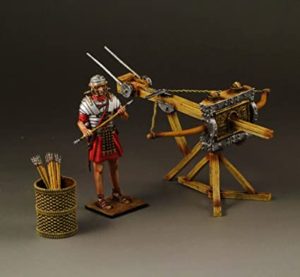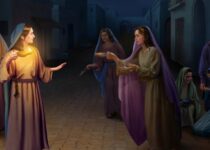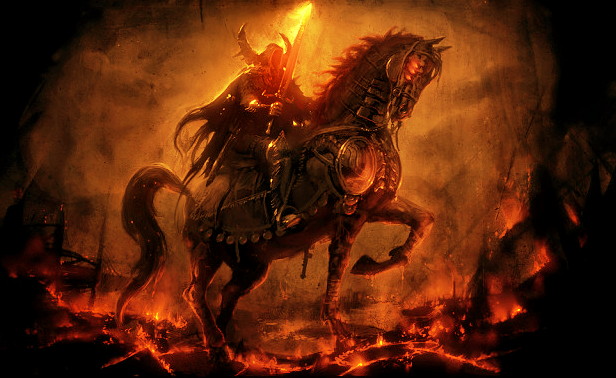IDENTIFYING THE ARMY OF LOCUSTS IN REVELATION 9
Then the fifth angel sounded; And I saw a star fallen from heaven to the earth. And to him was given the key to the bottomless pit. And he opened the bottomless pit, and smoke arose out of the pit like the smoke of a great furnace. And the sun and the air were darkened because for the smoke of the pit. Then out of the smoke locusts came upon the earth. And to them was given power, as the scorpions of the earth have power . . . The shape of the locusts was like horses prepared for battle. On their heads were crowns of something like gold, and their faces were like the faces of men. They had hair like women’s hair, and their teeth were like lions’ teeth. And they had breastplates like breastplates of iron, and the sound of their wings was like the sound of chariots with many horses running into battle. They had tails like scorpions, and there were stings in their tails. Their power was to hurt men five months. And they had as king over them the angel of the bottomless pit, whose name in Hebrew is Abaddon, but in Greek he has the name Apollyon. One woe is past. Behold, still two more woes are coming after these things.
(Revelation 9:1-3, 7-12)
Locusts are actually biblical metaphor describing for an invading foreign or Gentile army. We can see a reference to this in the first and second chapters of Joel where the Assyrian army is portrayed as a swarm of locusts.
What the chewing locust left, the swarming locust has eaten; what the swarming locust left the crawling locust has eaten; and what the crawling locust left, the consuming locust has eaten . . . Blow the trumpet in Zion, and sound an alarm in My holy mountain! Let all the inhabitants of the land tremble; for the day of the Lord is coming, for it is at hand. A day of darkness and gloominess, a day of clouds and thick darkness, like the morning clouds spread over the mountains. A people come, great and strong, the like of whom has never been; nor will there ever be any such after them, even for many successive generations.
(Joel 1:4; 2:1-2)
In those days when an army or invading force lays siege to a city, in similar way as a swarm of locusts, they leave the surrounding countryside stripped of food, timber and vegetation in order to sustain the war effort until victory is achieved. When you also consider an aerial view of them at a great distance, an army of several thousand troops even looks like locusts in a field.
It would interest you to know that Roman legions were often signified by a different sign of the zodiac or constellation in the night sky. Each Roman legion and auxiliary cohort often carried an image of a sacred constellation or a sign of the zodiac as a banner when going into battle. The sign of the zodiac for a particular legion characteristically represented the month in which the unit was created.
Revelation 9:5:The locust army was “not given power to kill them, but only to torture them for five months.” It is well documented that Titus and his army began their five month siege of Jerusalem in A.D. 70.
Revelation 9:11 states that:
They have as king over them the angel of the abyss, whose name in Hebrew is Abaddon, and in Greek, Apollyon.
At the start of the Jewish War, Titus was the commander of the Apollonian Legion. The soldiers of the Apollonian Legion are represented by locusts because locusts are sacred to Apollo. Apollyon perfectly fits Vespasian’s son Titus, who was the commander of the Legio XV Apollinaris (the Fifteenth Apollonian Legion). Titus then went on to succeed his father, Vespasian, as general over all the Roman legions in Israel after Vespasian became emperor. At this time a multitude of soldiers from the Euphrates converged on Jerusalem which fulfilled Revelation 9:14.
“saying to the sixth angel, the one holding the trumpet, “Set free the four angels who are bound at the great river Euphrates!”
For five months, from the middle of the month of Nisan to the middle of the month of Elul, Titus’ army caused famine and plague in the closed quarters of the Holy city when they shut off supplies before finally breaking through the last fortifications and putting thousands of people to death to end their misery.
John also says that these locusts wore crowns and have human faces. From research it is documented that high ranking Roman cavalry often wore masks sometimes ornately adorned with crowns or laurel wreaths. Many of these masks were adorned with long hair, hence properly fitting “the hair of women” in verse. 8. Below is an example of one such mask worn in the middle of the first century.

The Roman equestrian helmet.
“On their heads they wore something like crowns of gold, and their faces resembled human faces.”
Above one can see how the faces of these locust soldiers resembled that of a man wearing a golden crown.
9 They had breastplates like breastplates of iron, and the sound of their wings was like the thundering of many horses and chariots rushing into battle.
The first century Roman Soldiers Wore Breastplates of Iron as part of their armory. See a picture below:

“They had breastplates like breastplates of iron.” The standard issue armor of the first century shown above was constructed of plates of iron.
These locusts were also seen with the tail of a scorpio in John’s Revelation. The tail of Scorpio is another metaphor for the Roman spear, with its tail representing the shaft and its stinger the blade.
There is also a possibility that the scorpion image in that same verse may refer to the Roman ballista, a siege engine that hurled darts or arrows. According to Brian Martin author of “Behind the veil of Moses” some translations of The Wars of the Jews translate this siege engine as “scorpion.”

“Now this is what the horses and their riders looked like in my vision: The riders had breastplates that were fiery red, dark blue, and sulfurous yellow in color. The heads of the horses looked like lions’ heads, and fire, smoke, and sulfur came out of their mouths.” (verse 17)
In v. 17 the cavalry have fiery red, dark blue and sulfur yellow breastplates. They also foreshadow the fire, smoke and sulfur soon to engulf Jerusalem when it was burned by the Romans at its fall in A.D. 70. The summarizes the devastation that they caused the city and how they left it desolate.
These locusts are not something that we are looking forward in the future. It is also high time that people stop putting the blame on God for any locust invasion in any farm field. This is a fulfilled truth.
Credits:
1. “Apollo” Dictionary of Greek and Roman Biography and Mythology
2. Josephus, The Jewish War



Thank you and this contains so much good information. Wish all my FB friends would take note.
Amazing!
Thank you!! Seriously.
🙂
Good stuff..thanks. We need to hear this
This is a lot better than Charles Manson did when he said the locust were the Beatles!!! Nice article. When you don't know the truth, anything goes.
The truth is so much easier to understand. It's sad that so many today continue to look to the future for events that are so far in the past.
There is a chance it is about the Romans, since the hair like women, something like crowns of gold, iron breastplates, the colors.. all describe the roman army. Something the world hadn't seen in ancient times.